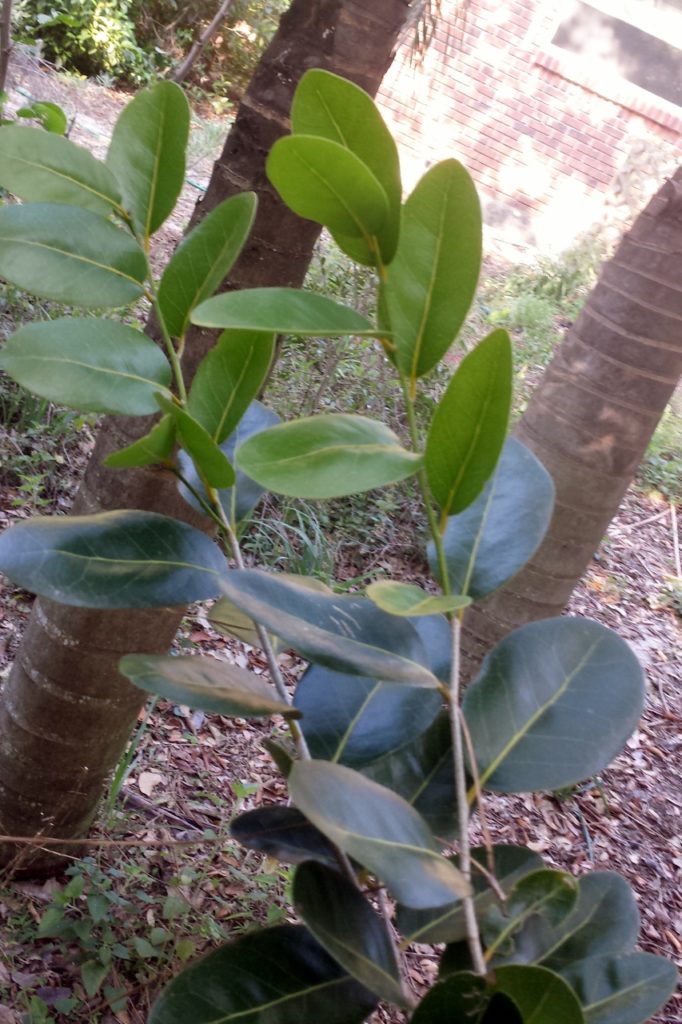
Milkbark
Drypetes diversifolia
Milkbark is also known as Whitewood. It occurs in rocklands of the Florida Keys mixed in with other hammock species. Milkbark is not tolerant of salt air or salt water, but is drought tolerant once established.
This is an unusual, narrow tree or shrub that reaches 35 or more feet in height after many years. It grows very slowly and will tolerate partial shade. Full sun and rich soil will produce a denser, faster growing plant.
The flowers are male and female on different plants (dioecious) and the pollen my cause allergies. The fruit is an oval white drupe that is poisonous and dries before falling. The single seed is a half inch long and hard. Remove the fruit if there are children around.
The young leaves, which look like holly leaves, are food for the larva of the Florida white butterfly. Older leaves are oval and up to five inches long.
This makes a great addition to a Keys planting. Mix with Wild Dilly, Gumbo Limbo, Paradise Tree, Mastic, Myrsine, Joewood, Lignum Vitae, Seven Year Apple, Maidenberry, Marlberry, Bahama Strongbark, Pigeon Plum, Blolly, Willow Bustic and Wild Tamarind.
Keep it in the sunny portions of the planting or on the outside south exposure.